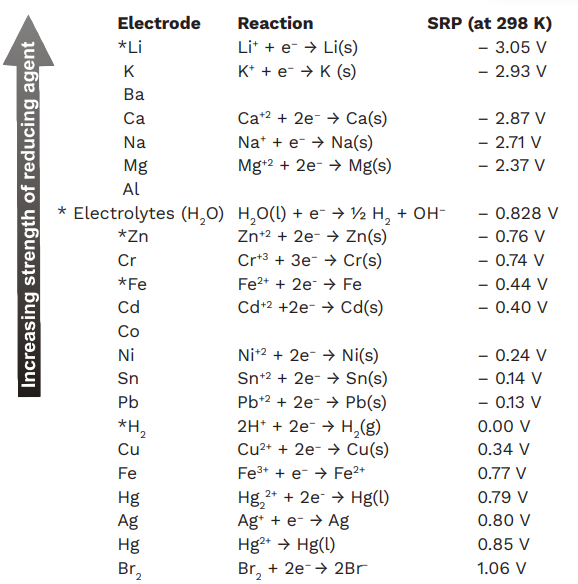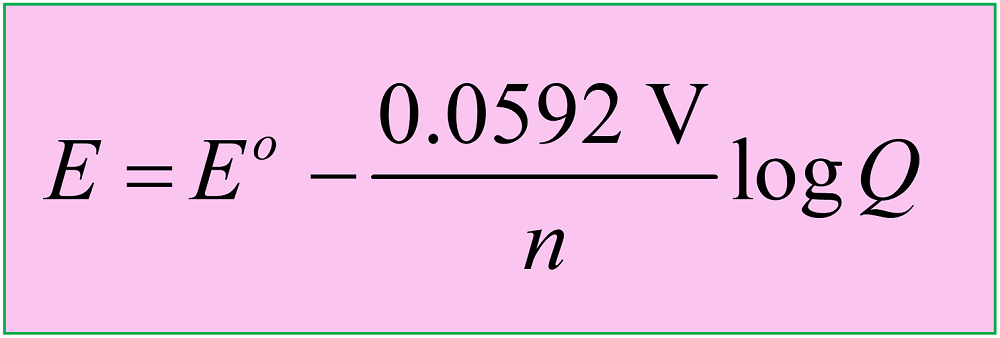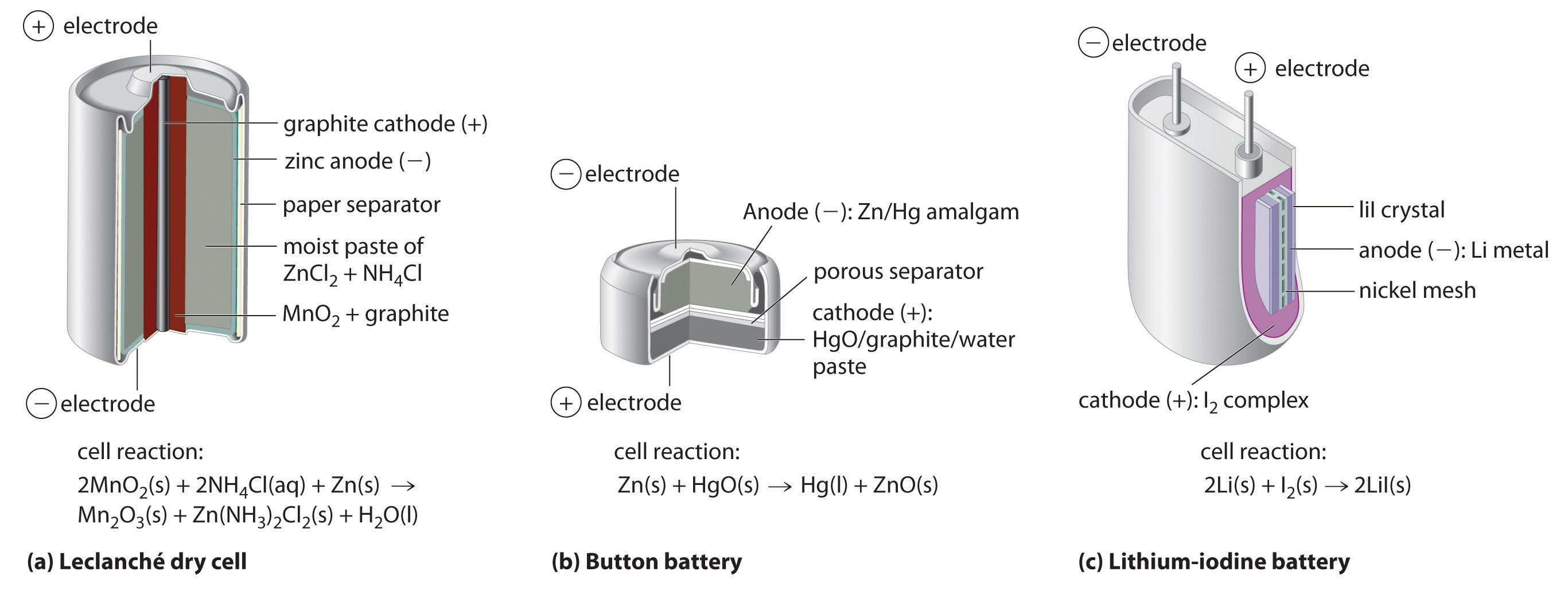3 - Electrochemistry
Enroll to start learning
You’ve not yet enrolled in this course. Please enroll for free to listen to audio lessons, classroom podcasts and take practice test.
Interactive Audio Lesson
Listen to a student-teacher conversation explaining the topic in a relatable way.
Electrochemical Cells
🔒 Unlock Audio Lesson
Sign up and enroll to listen to this audio lesson

Today we will explore electrochemical cells. Can anyone tell me what they think an electrochemical cell does?

Isn't it a device that converts chemical energy into electrical energy?

Exactly! We have two main types: galvanic cells, which convert chemical energy into electrical energy through spontaneous reactions, and electrolytic cells, which do the opposite. Can anyone give me an example of a galvanic cell?

How about the Daniel Cell?

Great example! Now, what are the practical uses of electrolytic cells?

They are used in electroplating and water electrolysis!

Correct! Now, remember: *Galvanic = Get Energy; Electrolytic = Energy to Create.* This can help you keep them straight.

So, it's like a power source versus a power user?

Exactly! Let's summarize: Galvanic cells generate electrical energy, while electrolytic cells require electrical energy. Great start!
Redox Reactions
🔒 Unlock Audio Lesson
Sign up and enroll to listen to this audio lesson

Moving on to redox reactions! Can anyone explain what oxidation and reduction mean?

Oxidation is when a substance loses electrons, and reduction is when it gains electrons.

Spot on! To remember this, use the mnemonic OIL RIG – Oxidation is Loss, Reduction is Gain. Why is this important in electrochemistry?

Because it drives the reactions in electrochemical cells?

Correct! Let's dig deeper: what is electrode potential?

It’s the voltage developed by an electrode in contact with its ions, right?

Exactly! And the Standard Hydrogen Electrode is our reference point. Now let's wrap this session up: remember the keywords OIL RIG for redox reactions and that electrode potentials are crucial in determining how reactions proceed.
Electromotive Force (EMF)
🔒 Unlock Audio Lesson
Sign up and enroll to listen to this audio lesson

Next, let's discuss EMF, or Electromotive Force. Who can tell me what that is?

Isn't it the difference in electrode potentials?

Yes! And how is it calculated?

By subtracting the anode potential from the cathode potential, right?

Correct! And it relates closely to Gibbs Free Energy. Can anyone remind us of the relationship between these two concepts?

It’s ΔG = -nFE_cell, where ΔG is Gibbs Free Energy change!

Exactly! *Energy free flows when it goes negative!* Let's underscore that: EMF reflects the potential for work and relates directly to Gibbs Free Energy. Well done!
Nernst Equation
🔒 Unlock Audio Lesson
Sign up and enroll to listen to this audio lesson

Let’s now dive into the Nernst Equation. Who can explain what this equation helps us determine?

It calculates electrode potential under non-standard conditions?

Correct! And it takes into account the concentration of reactants and products. Does anyone remember the formula?

It's E = E° - 0.0591 log[products]/[reactants]!

Excellent! And how about for a general reaction aA + bB → cC + dD? Anyone?

E = E° - 0.0591 log[C]c[D]d/[A]a[B]b!

Perfect! Let’s summarize today: The Nernst Equation adjusts electrode potential based on concentration; remember to use it for non-standard conditions. Great job, everyone!
Electrolysis and Practical Applications
🔒 Unlock Audio Lesson
Sign up and enroll to listen to this audio lesson

Finally, let's explore electrolysis. Can anyone explain what electrolysis involves?

It's the breaking down of substances using electricity!

Exactly! The flow of current causes ions to migrate to electrodes. What are two laws relating to electrolysis?

Faraday’s First and Second Laws, right?

Spot on! Faraday's First Law states that the mass deposited is proportional to the charge passed, while the Second Law relates mass deposition to equivalent weights. Can anyone think of real-world applications of electrolysis?

Electroplating and water splitting for hydrogen?

Correct! To conclude, electrolysis is crucial in many fields, ranging from industrial processes to sustainable energy. Great round of discussions today!
Introduction & Overview
Read summaries of the section's main ideas at different levels of detail.
Quick Overview
Youtube Videos










Audio Book
Dive deep into the subject with an immersive audiobook experience.
Introduction to Electrochemistry
Chapter 1 of 1
🔒 Unlock Audio Chapter
Sign up and enroll to access the full audio experience
Chapter Content
Electrochemistry is the branch of chemistry that deals with the relationship between electricity and chemical reactions. This chapter explores how chemical energy can be converted into electrical energy and vice versa. It forms the basis of many practical applications such as batteries, electroplating, and corrosion control. Electrochemistry helps us understand redox reactions in a deeper way, as these are the driving forces behind electrochemical cells.
Detailed Explanation
Electrochemistry is a field that combines chemical reactions with electrical phenomena. It focuses on how chemical reactions can produce electricity and how electricity can cause chemical reactions to occur. This relationship is crucial in technologies like batteries, which store electrical energy, and electroplating, where a metal coating is applied to another material. Additionally, understanding electrochemistry is essential for managing corrosion, the gradual degradation of materials due to chemical reactions with their environment. At the heart of electrochemistry are redox reactions, which involve the transfer of electrons and are fundamental to the operation of electrochemical cells.
Examples & Analogies
Think of electrochemistry like a two-way street. On one side, you have cars (electrons) that can move from one area (reactants) to another, resulting in energy being generated (electricity). On the other side, a signal (electricity) can prompt a construction crew (the chemical reaction) to build something new (produce a compound). This dynamic interaction is at play in everyday devices like batteries, where chemical energy allows us to power gadgets.
Key Concepts
-
Electrochemical Cells: Devices that convert chemical energy to electrical energy (galvanic cells) or vice versa (electrolytic cells).
-
Redox Reactions: Reactions involving the transfer of electrons, categorized into oxidation (loss of electrons) and reduction (gain of electrons).
-
Nernst Equation: Formula that adjusts electrode potential based on reactant and product concentrations in non-standard conditions.
-
Faraday's Laws: Descriptors of the quantitative relationship between electric charge and mass of substance deposited during electrolysis.
-
EMF: The potential difference across an electrochemical cell driving electron movement, calculated from electrode potentials.
Examples & Applications
The Daniel Cell is a practical example of a galvanic cell converting chemical energy of zinc into electrical energy.
Electrolysis of water involves using electrical energy to separate water into hydrogen and oxygen gases, demonstrating the principle of electrolytic cells.
Memory Aids
Interactive tools to help you remember key concepts
Rhymes
A galvanic cell sings with power, converting energy each hour.
Stories
Imagine a little galvanic cell bravely waking up each morning to convert energy from metals into electricity, meanwhile, its electrolytic cousin sleeps, waiting for a charge!
Memory Tools
OIL RIG: Oxidation is Loss, Reduction is Gain.
Acronyms
E=E°-0.0591 log
simple way to remember the Nernst equation!
Flash Cards
Glossary
- Electrochemistry
The branch of chemistry that deals with the relationship between electricity and chemical reactions.
- Galvanic Cell
An electrochemical cell that converts chemical energy into electrical energy through spontaneous redox reactions.
- Electrolytic Cell
An electrochemical cell that converts electrical energy into chemical energy through non-spontaneous redox reactions.
- Redox Reaction
A chemical reaction that involves the transfer of electrons between two species.
- Electrode Potential
The measure of the potential difference developed by an electrode when in contact with its ions in solution.
- Nernst Equation
An equation used to calculate the electrode potential under non-standard conditions.
- Electromotive Force (EMF)
The potential difference across an electrochemical cell, driving the movement of electrons.
- Faraday's Laws of Electrolysis
Laws that quantify the relationship between the amount of substance deposited during electrolysis and the electric charge passed.
- Conductance
The ability of a solution to conduct electricity, related to the concentration and mobility of ions.
- Corrosion
The gradual destruction of metals by chemical or electrochemical reaction with their environment.
3.1 Electrochemical Cells
Electrochemical cells are categorized into:
- Galvanic Cells: Convert chemical energy into electrical energy through spontaneous redox reactions. Example: Daniel Cell..png)
- Electrolytic Cells: Convert electrical energy into chemical energy via non-spontaneous reactions, applicable in electroplating and electrolysis.
3.2 Redox Reactions and Electrode Potential
- Redox Reactions: Involve oxidation (loss of electrons) and reduction (gain of electrons).

- Electrode Potential: Indicates the potential of electrodes in solutions; includes oxidation and reduction potentials with a standard reference (Standard Hydrogen Electrode).

3.3 Electrochemical Series
This series ranks elements by standard reduction potentials, aiding in predicting oxidizing and reducing agents and electron flow direction.
3.4 Representation of a Galvanic Cell
Standard notation represents the cell configuration. An example is Zn(s) | Zn²⁺(aq) || Cu²⁺(aq) | Cu(s) with a salt bridge to maintain electrical neutrality.
3.5 Cell EMF and Gibbs Free Energy
- EMF (Electromotive Force): Difference in electrode potentials.
- Relation to Gibbs Free Energy is given by ΔG = -nFE_cell, linking thermodynamics to electrochemistry.
3.6 Nernst Equation
This equation predicts electrode potential under non-standard conditions, essential for understanding actual cell performances.
3.7 Conductance of Electrolytic Solutions
Conductance types include specific conductance and molar conductance, which vary with electrolyte strength and dilution.
3.8 Kohlrausch’s Law
This law, indicating Λ∞ = λ+ + λ−m, helps estimate molar conductivity at infinite dilution and the degree of dissociation of weak electrolytes.
3.9 Electrolysis and Faraday’s Laws
Electrolysis allows materials to break down by electrical current, with Faraday’s laws quantifying deposition based on charge.
3.10 Batteries and Fuel Cells
Differentiates between primary batteries (non-rechargeable) and secondary batteries (rechargeable), as well as outlines fuel cells.
3.11 Corrosion
Corrosion involves the gradual destruction of metals through electrochemical reactions, with various preventive measures described.
Reference links
Supplementary resources to enhance your learning experience.

